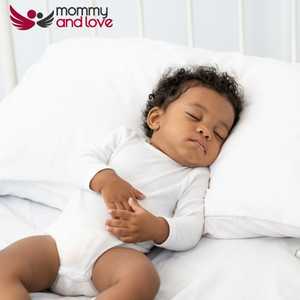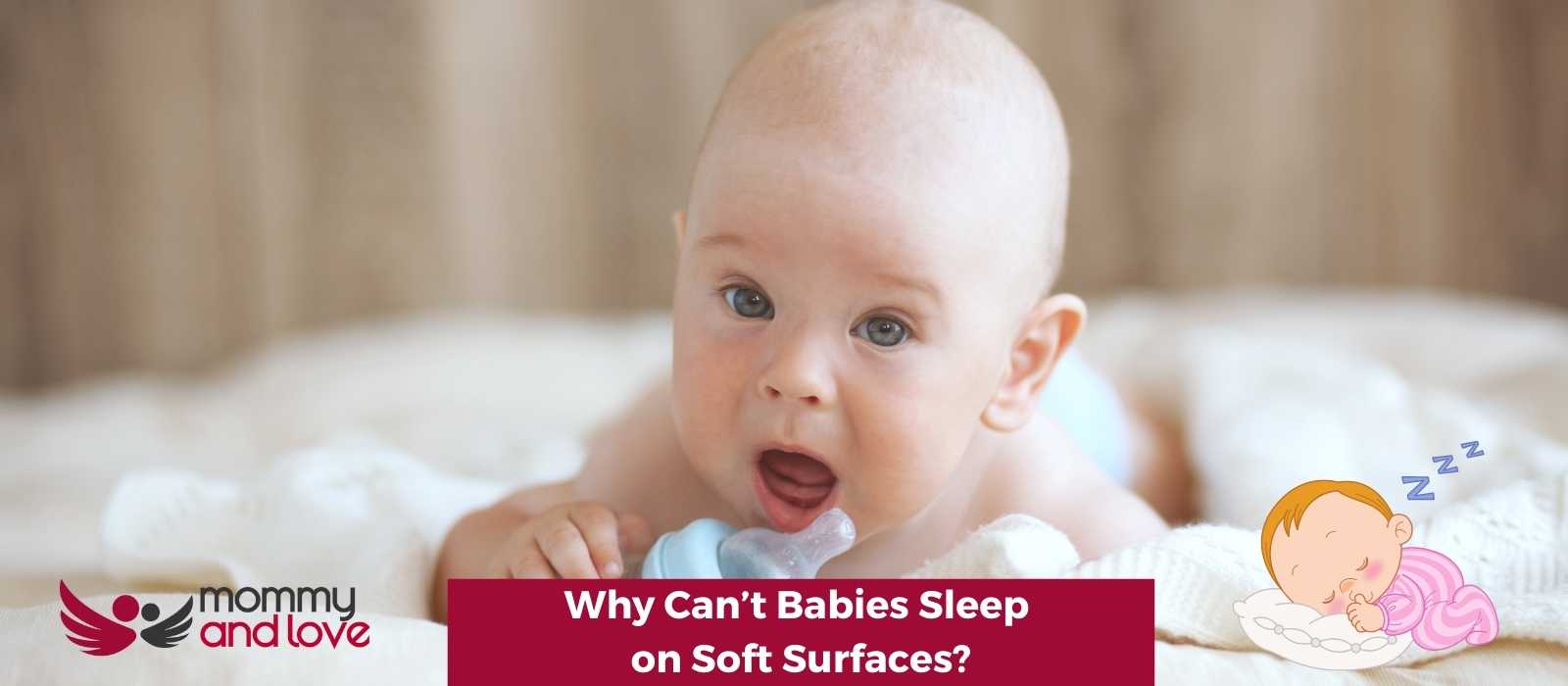While a soft, cushy surface may seem like the perfect place for a nap, the American Academy of Pediatrics (AAP) state that babies should sleep on a flat, firm sleep surface with no other bedding or soft objects such as stuffed animals to reduce the risk of sudden infant death syndrome (SIDS) and suffocation.
Why Is a Firm Crib Mattress So Important for Sleeping Babies?

There are many reasons why it is recommended for babies to sleep on a flat, firm surface such as mattresses with a fitted sheet.
One of the most important is that it helps reduce the risk of SIDS. Soft surfaces that indent and conform to the shape of a baby’s head create an environment that increases SIDS and suffocation risk, as they make it difficult for infants to breathe properly.
Additionally, a flat surface allows an infant to stay in a safe position on their backs, which is the sleep position that is most recommended by experts on child health and safety.
How Do You Know if the Crib Mattress Is Firm Enough?
When it comes to buying a crib mattress, there are a few things parents need to consider. The most important thing is that the crib mattress is firm enough to support your baby’s body. If the mattress is too soft, your baby could sink into it and become trapped or suffocate.
There are a few ways to tell if the firm mattress is firm enough.
- Press down on the mattress in the center and around the edges. If it feels too soft or sinks down too easily, it’s not firm enough.
- Try to lift the mattress up from one corner. If it’s too soft, it will sag in the middle.
- Lie down on the mattress yourself. If you can feel the springs through the mattress, it’s too soft.
When Can Babies Use a Softer Mattress?

Infants can sleep on a soft mattress when they reach a certain developmental milestone. Generally, infants can sleep on a softer mattress when they are older than 12 months and have better motor control, can roll over, crawl, and climb out of the crib.
This allows them to have a more comfortable sleep and prevents them from getting injured if they were to fall out of the crib.
If new moms and dads are unsure about whether their baby is ready for a softer mattress, they can always consult with their pediatrician. They will be able to give mothers and fathers specific advice based on their child’s development.
How Does Soft Bedding Increase the Risk of Sudden Infant Death Syndrome?
SIDS is a mysterious and tragic condition that causes babies to die suddenly and for no apparent reason. While the cause of SIDS is still unknown, there are several known risk factors, including softer bedding.
Soft bedding poses serious health risks of overheating and head covering, both of which have been linked to increased risks of SIDS. Additionally, the Center for Disease Control researchers found out that infant deaths due to accidental suffocation were often caused by softer bedding such as pillows and blankets.
Moreover, softer bedding can increase the likelihood that a baby will breathe her own exhaled breath (carbon dioxide).
While there is no guaranteed way to prevent SIDS, many parents can reduce the risk by using an extra firm crib mattress as a safe sleep surface and by avoiding soft bedding to help their baby sleep safely and soundly.
Additional Information on Safe Sleeping Environment for Babies
- A baby sleeping on an adult bed raises a lot of safety concerns including suffocation from soft mattresses, memory foam, and loose bedding such as blankets and pillows.
- A parent should sleep in the same room as her/his baby in the first year of her/his life.
- Putting babies to sleep in a supine position or on their backs reduces SIDS risk.
- Avoid bed-sharing. Bed-sharing is not recommended for young babies because most adult beds are not suitable as a sleeping surface. Instead of bed-sharing, placing the portable crib next to the parent’s bed while room sharing is more ideal.
- Bumper pads can be dangerous to little kids so it’s best to avoid them.
- Parents should not let their young children sleep on the couch or sofa. Most couches and sofas are not safe for sleeping and can be extremely dangerous.
Conclusion on Why Shouldn’t Babies Sleep on A Soft Surface
Though the jury is still out on what exactly causes SIDS, it is clear that putting the baby to sleep on their back on a firm and flat surface can reduce the likelihood of it happening. So, parents who are expecting a new addition to their family or have a little one at home should make sure to put them down on a good crib mattress that will keep them safe while they slumber in their crib.

This article was written by: Gian MIller – Full-Time Writer, Baby Whisperer & Dad of 3.
Gian spends a lot of his time writing. A self-proclaimed baby whisperer, Gian has been through it all with his own children and is passionate about sharing his hard-won wisdom with other parents. When he’s not writing or changing diapers, you can find him playing the guitar or watching baseball (or preferably both at the same time).




